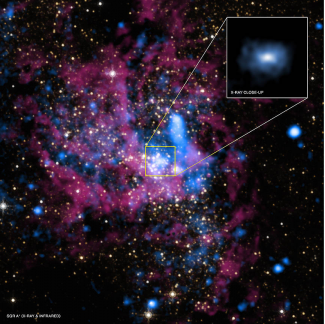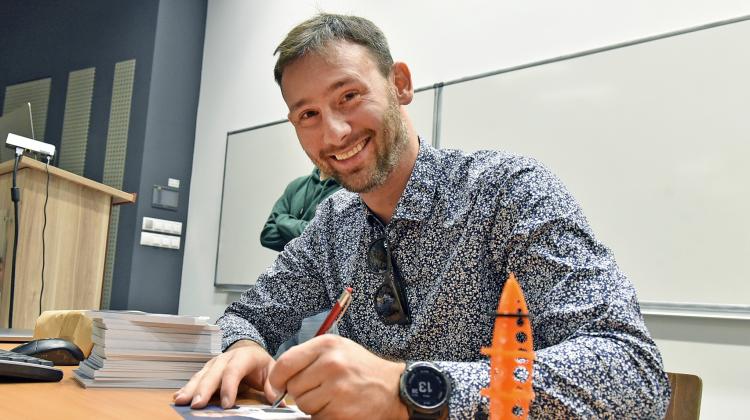The issue of the universe's construction, size and history has been of interest to humanity since antiquity. The achievements of Copernicus, Kepler, and Newton were groundbreaking. The next important step was Hubble's discovery of the recession of galaxies in the 1920s, proving the expansion of the Universe. Today we are witnessing new discoveries contributing to the progress of cosmology and astrophysics. This year's Nobel Prize in Physics concerns, as last year, discoveries made in those areas that pose questions about the fundamental issues for our understanding of the universe.
Signature for the photo: The Milky Way Center photographed in infrared (red areas) and X-ray (blue areas) rays. https://www.nasa.gov/sites/default/files/styles/full_width_feature/publ…
The prize was awarded to researchers of one of the most amazing phenomena in the universe - the black hole. The black hole is an object of great mass and density, whose gravity attraction is so strong that nothing can get out of it. This applies even to light, whose speed, the highest possible for the propagation of matter and any signals, does not exceed the so-called "escape velocity" from the black hole.
Half the prize (amounting to 10 million Swedish Crowns) was awarded to Roger Penrose of Oxford University (Great Britain) "for discovering that the formation of the black hole is a solid forecast of the general theory of relativity," as formulated by the Nobel Committee. Penrose created ingenious mathematical methods and, based on the general theory of relativity, gave a detailed description of black holes and related peculiarities - a point of infinite density where the known laws of physics collapse.
In 1965, he showed that their existence is the result of a general theory of relativity, a theory that interprets gravity as a consequence of curvature of space-time.
The second half of the prize was divided between two astronomers: Reinhard Genzel working at the Max Planck Institute for Extraterrestrial Physics in Garching (Germany) and at the University of California in Berkeley (USA) and Andrea Ghez from the University of California in Los Angeles (USA). (Ghez is the fourth woman to receive an award in physics.) She was awarded "for discovering a supermassive compact object in the center of our galaxy. Starting in the 1990s, Genzel and Ghez and a group of collaborators engaged in research on the world's largest telescopes and developed new sophisticated observation techniques to compensate for the harmful effects of the atmosphere. They found an object in the center of the Milky Way, in an area called Sagittarius A* located in the constellation of the Sagittarius A*, about 26000 light-years from us, an object with a mass of about four million times that of the Sun. They made this discovery by a precise analysis of the orbits of the stars, characterized by extremely high speeds of about 104 km/s, which can be explained precisely by the influence of the supermassive object in the center.





